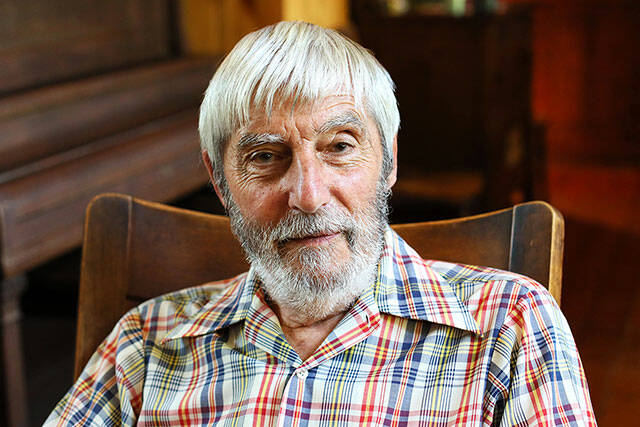Editor’s note: John Locatelli’s new column series, “The Weatherman”, is part of the Courier-Herald’s ongoing community columnist initiative. His columns will be published the fourth edition of every month.
It’s the Russians’ fault.
In 1957 I was a happy-go-lucky 12-year-old boy whose main concern was how to spend an endless summer having fun. After all, this was the 1950s — the war was over, one income could still raise a family and I had the then common luxury of a full-time mother at home.
However, on the 4th of October, 1957, an event happened that would change the course of my life, what I would do for a living, who I would marry, what my kids would be like and where I would live.
It was the launch of the Russian satellite Sputnik 1.
I remember standing outside my house in West Seattle, looking up at the starry sky and seeing the faint flashing of the satellite as it rotated miles from earth. I wasn’t awed, but very scared. For this meant that the Cold War, which was just an abstract notion for me, now was a reality. This meant the Russians could now send a ballistic missile with an atomic war head to Seattle in minutes and destroy my family — Seattle was a prime target because it was home to the Boeing aircraft plant.
I wasn’t the only one scared. A lot of elected and government officials were also scared. They were scared enough to start programs to find students that had an aptitude for science and math. I was scooped up along with others to be in advanced classes including a before-school accelerated science class.
I excelled in these classes, but my heart was elsewhere. I wasn’t too interested in science and math. I was interested in art and architecture. But I continued in the course of classes set out for me and upon graduation in 1963 I received a full-ride four-year scholarship to the University of Washington to study science. But what science? I wasn’t fascinated with chemistry or physics, and I didn’t fancy being buried in math equations either.
However, my best friend, Bill Wills, was crazy about the weather, and he was going into the Atmospheric Sciences Department. That started a 40-plus year career at the department’s Cloud Physics Lab as a research scientist after I graduated in 1967.
My first research project was funded by a grant from the state of Washington to study the feasibility of seeding the clouds over the Cascades. I needed data about snowflakes and when I searched the literature, I couldn’t find what was required. I designed and constructed an apparatus to measure the fall speed, weight and type of snowflakes, then spent time at Snoqualmie Pass and Mount Rainier taking measurements.
To study snowflakes I had to keep the van below freezing, so a highpoint of the day was lunch complete with frozen lettuce. Even though since then I’ve published break-through research on other topics, I am most famous for my snowflake study. Ironically, I ended my career again studying snowflakes. Over my career I have looked at thousands of snowflakes.
After I wrapped up my career, I became an accountant, counterman, and, yes, delivery boy (though I was hardly a boy starting when I was 63 and ending when I was 68) at Young’s Flowers and Gifts, a long-time flower shop on Cole Street in Enumclaw. Some of you may remember the shop.
The only reason I’m still here at 77 is because what I was best of all at was running from dogs. Yes, dogs, especially the ones who would lay quietly on a porch or hidden in a barn while I carried flowers down a long driveway only to rush out barking when they thought they had me trapped. I pictured Enumclaw as the perfect town to retire in. Enumclaw, with its nice level walkable streets and assessable stores — what’s not to like? Unfortunately, the predominance of flower wire services on the internet depleted the flower business to the point where two flower shops in Enumclaw was one too many.
Weather remains my passion — it’s all around me, every day, and trying to puzzle out its secrets is both challenging and gratifying. We live in a world where everything must follow physical laws, at least in the universe we find ourselves in. So, as we go about our daily lives, we already have learned much about our physical world most of the time without knowing it. We just need help in connecting what we already know to understand a lot of science.
The weather in Enumclaw is very interesting and somewhat unique. This is because of its location on a flat plateau with a rapid rise to the east of the Cascades; a location where the Cascades have a low spot which can cause a strong, sometimes devastating easterly wind. However, this location downwind from the low spot in the Cascades affected more than the weather. The name Enumclaw, some think, comes from a Native American term that translates as “thundering noise” caused by the powerful windstorms from the east.
My goal is to show you that you already know more about science and the weather than you think you do and to help you understand what you experience living daily in our atmosphere. I promise that my articles will be jargon-free zones, as jargon is what scientists — and especially doctors — use to make their world hard for us to access. I also promise that you will learn secrets of the atmosphere that very few people know.


